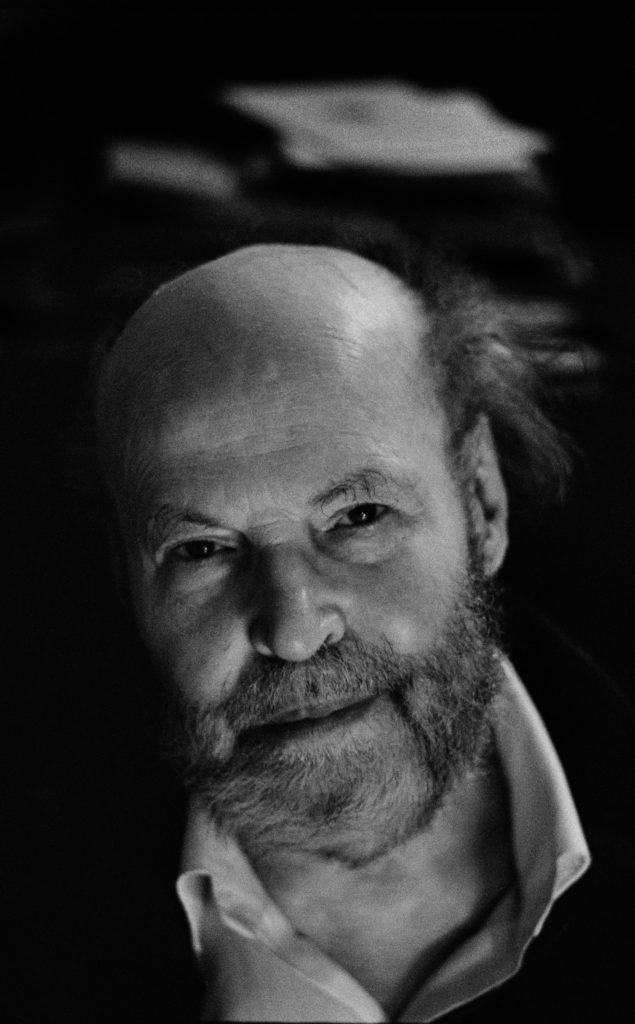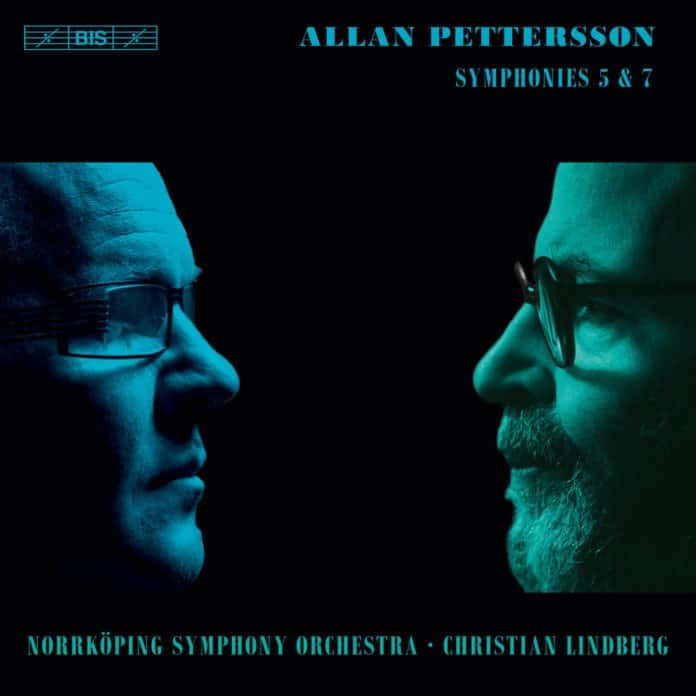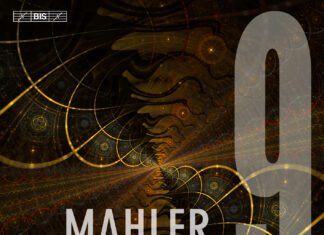The 16 symphonies of Allan Pettersson have often been described as music of pain, anguish, and sadness. They are unlike those of any other 20th-century composer: think of a Shostakovich slow movement (with all the percussion outbursts) combined with the passion of a Mahler adagio, hints of a sardonic Mahler scherzo, melodic lines that are usually broken and with dissonance being a main feature. Additionally, a Pettersson symphony is most of the times cast in one movement, its motifs repeated throughout the work, with a near-constant rhythmic force driving everything from beginning to the end. A resolution doesn’t always arrive, but when it does, it is cathartic.
Does all this sound gloomy? Well, there might be a few reasons for this. The composer suffered a tough upbringing in poverty. Pettersson lived with his parents and three siblings in a one-room apartment (in fact a half-basement, below street level) with bars on the window. His father was an abusive alcoholic blacksmith who didn’t care for his son’s talent. Apparently, the 10-year-old Pettersson had to sell Christmas cards to buy his violin and, being self-taught, he made his way to the Royal Conservatory of Music. The years that followed were equally unfortunate: as a musician, he was only known in narrow music circles and even though he had been suffering from rheumatoid arthritis, he was confined in a small fourth-floor apartment with no elevator, where he lived with his wife for 30 years.

While this introduction does not aim to present the composer as a hero who became belatedly (and relatively) known because of his suffering, it is important to take into account the living conditions under which he composed the main corpus of his work, before judging his music as depressing (which is often the case). Needless to say, Pettersson worked on his 10th and 11th symphonies while being hospitalised. As for this 7th symphony, it’s importance cannot be overlooked since this is the very work that made him more widely known in his country.
In fact, it was Dorati who premiered the 7th symphony in 1968 to instant success and overnight fame. Again, fame is a relative term since Pettersson’s music is still unknown to many classical music enthusiasts outside Scandinavia. Yet, the 7th symphony has been the luckiest on record and offers an excellent starting point for anyone wishing to embark on the Pettersson journey.
So far, I am aware of the following available recordings of this work: Leif Segerstam’s with the Norrköping Symphony Orchestra on BIS, Gerd Albrecht conducting the Hamburg State Philharmonic Orchestra on CPO, and Sergiu Comissiona with the Swedish Radio Symphony Orchestra on Caprice. To my knowledge, the Dorati recording has been out of print and is the only one I am not familiar with.
The present recording by Lindberg and the Norrköping Symphony Orchestra on BIS is the fastest at 41’40. This is a more urgent reading than both Segerstam and Albrecht and, in terms of tempo, it is closer to the Comissiona release. (Update: Referring to my review, Christian Lindberg himself points out something very interesting: Pettersson indicated the playing time for each symphony and his estimation for the 7th symphony was 41-42 mins. Of course, this means that Lindberg comes very close to the composer’s own estimation, making the present release even more impressive!)
In fact, this 7th is not only faster but more tightly executed. While Lindberg and his forces respect the introspective sections of the work, there is a sense of urgency that underlines the emotional tension and fits the nature of this music like a glove. The richness of the strings is present throughout while the precision of the orchestral attacks is technically impressive. There are two things, though, that truly stand out. The first is the close attention to dynamics, assisted by the state-of-the-art recording. Lindberg puts particular emphasis on the contrasts between the transitioning phases and this brings me to the second highlight of this performance which is the interpretation of the final part of the symphony: for those used to the Segerstam performance, Lindberg doesn’t hush but lets the violins really soar while hitting the high notes, their interplay with the winds more immediate, creating a chamber-like effect that is closer to human singing than orchestral playing. And what seems like a fast tempo initially, gradually resolves into a transcendental ambience of meditative sounds towards the end. The last minutes are quite spellbinding.
Recording quality is of vital importance when it comes to Pettersson: so rich is the score and the orchestral detail that one needs to be able to hear every nuance. I can attest that the Lindberg recording has the best-recorded sound so far. Such is the transparency of sound that I noticed details for the first time: especially the triangle and some wind instruments come across as especially vivid in both symphonies.
As for the 5th, a personal favourite of mine, Lindberg once again follows a fast tempo in relation to the available recordings. An important requirement for most Pettersson symphonies — especially from the 5th onwards — is a continuous rhythmic drive. Lindberg manages that and much more. The urgency I mentioned, when describing the performance of the 7th, also works wonders in the 5th by keeping the whole structure of the movement cohesive throughout its transitions.
A side-by-side comparison with the Francis version on CPO reveals some notable differences. While Francis and his Saarbrücken Radio Symphony Orchestra produce rather dark colours, with the brass really blazing through and the percussion creating shattering effects, Lindberg sounds tamer. However, I am not sure whether this is so much an interpretative approach or a result of the engineering: the transparency of the BIS recorded sound is such, with a wide soundstage emulating more realistically the ambience of a concert hall, that the music is more evenly spread out, compared to the slightly more congested sound of the CPO recording (after all the latter was made a decade ago). Still, Lindberg provides clearer rhythmic accent and some extraordinary orchestral detail (listen how he thrusts the opening of the second track in Symphony 5: Figure 17).
How does, then, this new release fare in the end? Both symphonies are performed meticulously and recorded in glorious, hi-res sound. Lindberg manages to both keep the rhythmic drive of the work and at the same time bring out all the details even when the textures get thicker. Does this mean that this is the perfect recording? For such complex works, a state of perfection might be difficult to attain, even if Lindberg comes close. Yes, a darker sound and more powerful climaxes would be welcome, but the emotional punch he delivers by keeping the tension is a remarkable achievement. Moreover, choosing the ideal Pettersson performance is a difficult task precisely because the Pettersson discography is so selective and the available performances have striking differences between them. And while I love the harsher sound of both Segerstam and Francis, I keep returning to the Lindberg coupling because of the orchestral detail and the aforementioned rhythmic drive.
Lindberg is clearly a conductor who understands the spirit of Pettersson and has something new to say. It is no exaggeration to claim that when the symphony set is completed for BIS, it will be an important addition to the classical music discography and everyone involved should be congratulated for participating in such a project. It is about time that recording agencies undertook such ambitious projects, instead of releasing a new Mahler cycle every now and then. Pettersson is not just an important composer, he is a composer that belongs to the great ones. Kudos to Lindberg, the Norrköping Symphony Orchestra, the producers and BIS for this substantial release.
Rating: *****

Allan Pettersson, Symphonies 5 & 7
Norrköping Symphony Orchestra
Christian Lindberg (conductor)
BIS
Useful links (feel free to join the Facebook Pages/Groups if you are a Pettersson fan):
The Allan Pettersson Project Page on Facebook
Allan Pettersson Enthusiasts Group on Facebook
Allan Pettersson Page on Facebook
International Allan Pettersson Society








Wow, so pleased about this…been waiting a while…
[…] Lindberg has been recording a splendid cycle of the Pettersson symphonies, the latest recording recently reviewed here). Lindberg further comments on the name when he states that, “The sound a title makes is, I […]